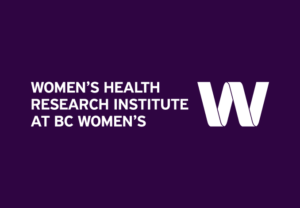
This month, we were able to interview family physician Dr. Justyne Morrow who was awarded the 2021 Sue Harris Family Practice Research Grant for the research study, “Barriers to Accessing Cervical Cancer Screening in the Thompson-Nicola Region.” Dr. Morrow graduated from the University of British Columbia (UBC) Medical School in 2016 and pursued her residency in family practice at the University of Calgary in 2018. She then took on a longitudinal practice in Kamloops, BC where she supported the establishment of the Supporting Team Excellence with Patients (STEP) Society Women’s Clinic in February 2021. She is currently the medical director for the clinic and a clinical instructor for UBC.

What led you to pursuing research as a clinician?
At the STEP Society Women’s Clinic, we offer a variety of services such as pap smears for cervical cancer screening, contraception consultations, and testing for sexually transmitted infections. I had noticed, in some cases, a 10 to 15 year gap in many of our patients receiving pap smears. I then became curious of the barriers to them seeking this preventative care because there had been nurse run clinics in the community at the time. In a case of good timing, a colleague had shared the Sue Harris Family Practice Research Grant with me and I had an idea for this study.
Why is this research important?
It is estimated that with regular pap smear screening, approximately 70 per cent of cervical cancer cases could be prevented in BC. However, at this time, only approximately 60 per cent of women were getting their pap smears done regularly. Meaning, there is a huge opportunity lost to prevent cervical cancer in the other 40 per cent. This research is also important because we wanted to include the experiences of marginalized populations, such as trans men, those of lower socioeconomic status, and immigrant populations, in this study. Previous research has also shown that Indigenous populations tend to have lower levels of cancer screening due to factors such as colonial legacy, education and socioeconomic inequalities, and a shortage of appropriate health care providers, so this research is important to help further understand these barriers.
How did you approach engaging with the community?
We put the posters up in spaces we believed would be accessible, such as clinics (including the gender clinic), public spaces, and women’s shelters. We did have our surveys and posters translated to languages that were primarily common among immigrant populations in the community, which were French and Italian. Unfortunately, our Punjabi translation did not work out because we did not have the correct alphabet to transfer it to the online system and had a tight timeline. We also experienced challenges in pursuing Indigenous language translations since there were limited people who could provide translation services because of the loss of culture resulting from colonization.
What were the key findings of this research?
Women highlighted many factors that impacted their access to pap smear screening, such as lack of access to a provider who offers that service. This was helpful to me as a provider who runs a women’s health clinic, since now I know we need to do a better job at spreading the word about our services in the community. Additionally, previously identified factors from other research such as access to care outside of regular office hours, child and 2SLGBTQIA+ friendly spaces, and trauma-informed care to help with any pain or embarrassment that comes with pap smear screening, were also mentioned by participants. Overall, the most common response to the question of how to make pap smears more accessible was for screening reminders to be sent from their providers, which is an easy thing we can do.
What have been the successes in this research?
We were really excited to see great community interest in our study. In just one month, we collected 158 responses to our survey. Just having the space for women to share their experiences to speak more to these barriers was also a success.
What are your next steps for this project?
We are looking to share our results through the Interior Health Authority to reach other providers and are also considering publishing our research.
What has been a key lesson you’ve learned from doing this research as a clinician-researcher?
This research stemmed from my own curiosity for my own patients, so it was great to see how research integrates well into my practice. Sometimes, when we are out in practice we can feel separate from the research community, but it can fit into our work quite well and help translate findings into patient care.
If you could share one call-to-action for research with those who work in healthcare, what would it be?
As family physicians, we have a privileged place in the community where we can really see what is impacting our patients. We have a valuable perspective that can help inform good research topics to explore, which can also be a part of our own practice!
At our clinic, we had a couple of very eager and keen residents, Dr. Rachel Cook and Dr. Victoria Elliot, working on this project who were a great help! I do hope that this can encourage them to continue doing research in their own practices in the future.
What is your advice for someone applying to the Sue Harris Family Practice Research Grant?
It might appear intimidating at first but it is possible with the help of colleagues with research experience in the application process.
The Sue Harris Family Practice Research Grant supports research that contributes to women’s (cis and trans-inclusive) health within the discipline of family practice. The funding is intended to support new researchers (family practice residents and/or practitioners) to develop and carry out a pilot research project. The application deadline for the 2023 Sue Harris Family Practice Research Grant is September 1, 2023. For more information about the grant, click here.